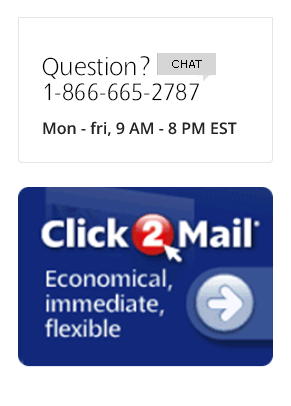12 Steps to Direct Mail Success – Step 6: Lay Out and Design Your Mailer
The copy and graphics on your mailer are what allow you – through that piece of paper – to create an emotional connection with your prospect. Create that emotional connection, and you’re exponentially more likely to make the sale. In Step 5 (Write good copy) you did that with text, now how to do it with design? These 7 tips will get you on your way.
7 tips for effective layout and design
1. Ask, “Would I put this on my refrigerator?” We can probably all recall a few mail pieces we’ve received that have stood out enough to put on the fridge – maybe they were particularly witty, or the art was especially appealing.
Certainly your mail piece doesn’t have to be “fridge-worthy” to be successful. And while the fridge test is a quick and easy way to determine how attention-getting and memorable your mailer is, it doesn’t guarantee a high response. But as Natalie Engler wrote in the magazine Deliver, “if you manage to make that great art relevant to your message, the place for your mailer just might be on someone’s office wall.”
2. Use eye-catching, relevant graphics to get your message across in an instant. A direct mail piece is kind of like a billboard in that it must grab your prospect’s attention right away. It’s unlike a billboard in that, if you can catch your prospect’s attention, you can take some time to explain the benefits of your product or service.
Postcards are typically thought to be the easiest attention-getters, because your entire message (graphics and all) is visible. With Click2Mail’s Easy Letter Sender you can take advantage of the benefits of a letter (including more room to explain your message in text) and have a visible image to grab recipients’ attention. (Our self-mailer flyers do the same.)
3. Whatever mail format you choose, pay attention to everything that is visible. If you’re mailing a postcard, pay attention to the design and layout of the “back” side (where the address is) too. In fact, the back is the first side that most recipients will see (since mail typically arrives address-side up). The images and text on the back side, then, should entice recipients to turn the card over and check out the rest of your message.
4. With every design element you add, think “What’s the point?” No matter the format of your mail piece, every inch of space should be designed purposefully (even if it’s white space). “Gilding the lily is one of the pitfalls of direct mail,” said creative director Steve Goebel in Deliver. “If you focus too much on the art and not enough on the call to action, you’re just making art for art’s sake.” Instead, ensure that all of your design elements work to accomplish the goal you’ve set out for your mailer.
5. Be consistent. Your direct mail is an extension of your brand. So the fonts, colors, and images you use to design your mail piece should be consistent with the fonts, colors, and images you use elsewhere – in your store or office, on your product packaging, on your website, on your business card and stationery.
6. Use white space. Designing your mail piece purposefully doesn’t mean covering every inch with text, images, or color. In fact, white space should be an important element of every mail piece, no matter the size or format. White space makes the graphic elements, colors, and text you do include more powerful.
As Inspired Mag put it, “White spaces play an absolute role in determining the hierarchical significance of various sections of content on a particular page. In many ways, white spaces direct how and upon what terms we ‘read’ a particular design artifact.”
7. Choose color wisely. Colors create emotional responses, even when we’re not aware of it. While the colors you use in your mail piece should be consistent with your brand’s, think about the emotional response they will generate before you decide to include them. For example, red symbolizes energy, passion, excitement, and power; it can also imply aggression and danger. Yellow conveys wisdom, joy, brightness, happiness, and light. Blue represents wisdom, confidence, loyalty and trustworthiness; it can also imply sadness and depression.
No pressure but the design of your direct mail piece can have an enormous impact on the results you get from it. One non-profit organization increased its response rate by 73% by simply switching from a black envelope to a white one, according to Steve Cuno in Deliver.
That said, you don’t have to be perfect on your first try (read our article on how Click2Mail makes testing your direct mail easy).





